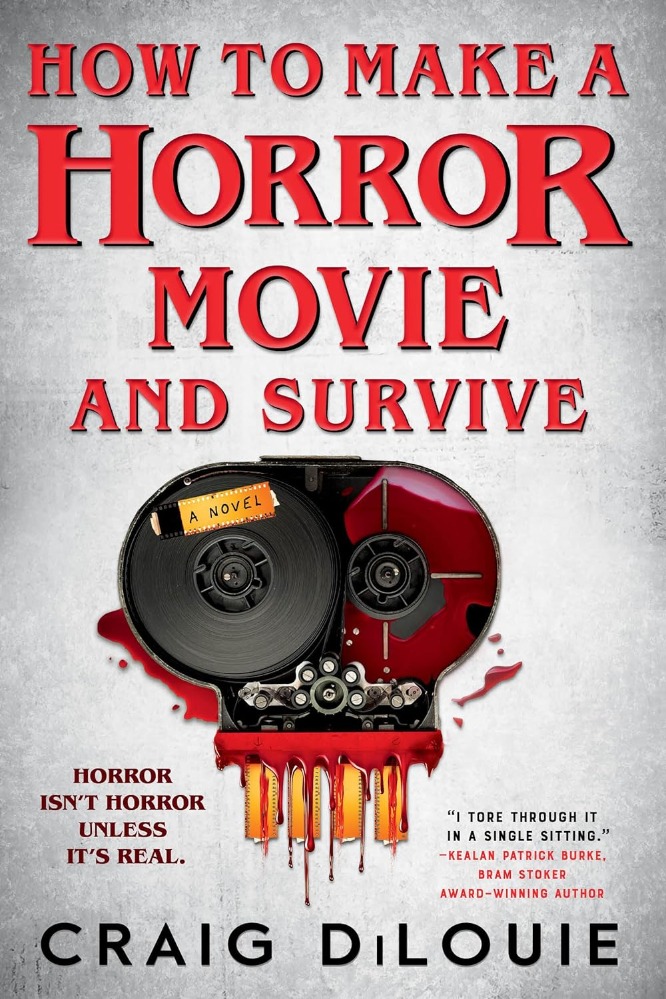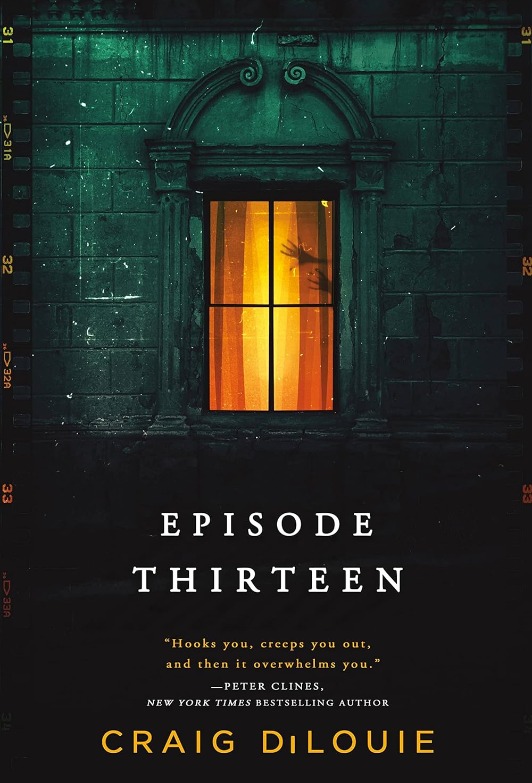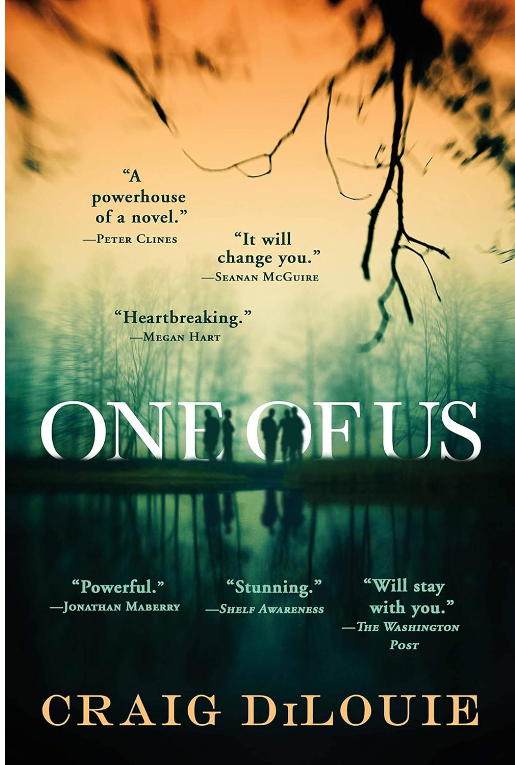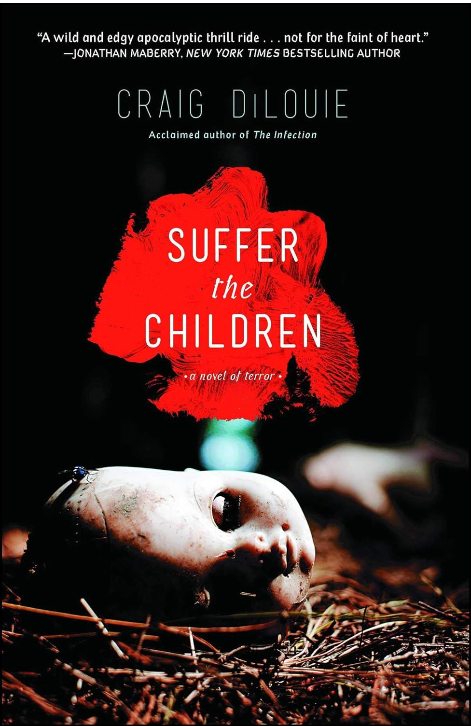Later in his career, legendary horror director Wes Craven explored the intersection between cinematic horror and the real-world kind in Wes Craven’s New Nightmare and, more successfully, Scream 3. Horror author Craig DiLouie goes Craven one step further in How to Make a Horror Movie and Survive. DiLouie’s protagonist, acclaimed horror director Max Maurey, is a warped version of Craven who learns how to incorporate the supernatural in his new movie to gruesome effect. The result is a dark, humorous story that succeeds as satire and horror.
How to Make a Horror Movie and Survive takes place in 1988, as Maurey celebrates the premiere of his newest hit slasher film, Jack the Knife III. But he’s not happy. His first Jack the Knife movie was a low-budget horror story, with him in complete control. Thanks to producer Jordan Lyman, success led to a major studio and a bigger budget. It also resulted in a script that adhered to all the horror
film conventions, including the Bad Girl and the Final Girl. The result is a box office success, with the premiere audience whooping it up and laughing at each kill scene. Lyman is ecstatic; Maurey is not. He’s shattered that audiences view his work as an update of The Rocky Horror Picture Show, minus the “Time Warp” dance number.
A distraught Maurey finds salvation when he attends the estate sale of a less successful horror director who became a cult legend because of a film that was never released. Fifteen years earlier, Arthur Golden made Mary’s Birthday, a typical horror movie marred by a bizarre helicopter crash at the site of the wrap party. Almost the entire cast and crew were killed, and Golden became a recluse for the rest of his life. At the estate sale, Maurey purchases a box containing the camera Golden used to film the wrap party. Maurey soon discovers that the camera is cursed. Anybody it films soon dies grotesquely. Eventually, Max decides to make a new horror film that will be an artistic masterpiece. The pièce de résistance will be the finale, filmed using Golden’s cursed camera and capturing the carnage resulting from the curse.
A book about a cursed camera wreaking havoc on a movie shoot could be entertaining by itself, but the author has grander ideas. Max can’t just show up somewhere, with camera in hand, and start filming hapless victims-to-be. Instead, he assembles a cast and crew, finds a suitable script, and persuades a novice screenwriter to join the project. He has to negotiate with the despised Jordan Lyman to get funding for the new movie, agreeing to do another Jack the Knife sequel in exchange. (Max even agrees to have a Lay’s potato chip product placement in his new movie, a gag that pays off beautifully during the final shoot.) He finds an actual location that’s almost too good to be true, the Uber-environmentally unfriendly Salton Sea (even in 1988). Much of the middle portion of How to Make a Horror Movie and Survive is devoted to the nuts and bolts of filmmaking but with a twist. While Max is organizing and planning his film, he knows what everyone else in the project doesn’t. Namely, this film will mark the end of their careers.
Horror movies (and books about making horror movies) need a Final Girl, and How to Make a Horror Movie and Survive has a great one. She’s Sally Priest, a prototypical young actress with a demanding mother. But instead of going the usual route of years of romps on studio executives’ casting couches followed by bit parts, Sally realizes she can get ahead more quickly in horror films. So, she becomes a Bad Girl, the one who makes poor choices and dies at the beginning of Act Three. Sally also studies acting to become a serious actress. And, somewhat by coincidence, she befriends Max, accompanying him to Golden’s estate sale. Sally later joins the cast of Max’s new movie, If Wishes Could Kill. Naturally, she’s going to play the Bad Girl. Here, however, while the Final Girl is an unobservant cokehead who’s made a name for herself playing Final Girls, Sally figures out what’s going on and tries to warn her fellow cast members. Ironically, Sally is the only person in the cast or crew of If Wishes Could Kill whom Max cares about, and from an artistic, not a lustful, perspective.
The thought of a horror story about a cursed movie camera becoming a death-wielding instrumentality may excite many horror fans. However, they may be disappointed at this book’s relatively leisurely pace. The story gets repetitive sometimes, with many text inserts of italicized portions of the screen treatment describing the plot and setting of If Wishes Could Kill. But How to Make a Horror Movie and Survive has enough gruesome death scenes to satisfy all but the most jaded gore buff. Moreover, the manner of the deaths in this book is highly stylized, resembling the elaborate scenarios in the Final Destination movies.
The author has chosen this book’s time frame well. The late 1980s represent the transition of horror movies, especially slasher movies, from extremely low-budget exploitation works to studio tent poles. When reading How to Make a Horror Movie and Survive, I could easily imagine Wes Craven, George Romero, or John Carpenter expressing many of Max’s feelings... without the deadly cursed camera, of course. The author also repeatedly references Cannibal Holocaust, a notorious faux-documentary with footage so graphic that the director was actually arrested on murder charges based on suspicions that he had killed some of his cast. (The charges were dropped when the live cast members showed up.) It’s easy to see how Max appreciates the “artistry” of Cannibal Holocaust and wants to go one better.
The brilliance of How to Make a Horror Movie and Survive is that it works very well as a horror story, although one that moves slowly in spots. But it’s also a pointed commentary on moviemaking in general and horror moviemaking in particular. The author repeats Max’s favorite mantra several times in the book: “Horror is only horror when it’s real.” Craig DiLouie successfully contrasts the stylized, rule-bound version of horror movies in which potato chip bags become props because a sponsor pays for them with the genuine horror Max is after. This is a book that only an authentic, very talented horror movie buff could have written. Horror film fans will love surviving How to Make a Horror Movie and Survive.
NOTE: The publisher graciously provided me with a copy of this book through NetGalley. However, the decision to review the book and the contents of this review are entirely my own.
Journalist and artist Hermione Flavia of Cravenwild discusses How to Make a Horror Movie and Survive:
Read other reviews of How to Make a Horror Movie and Survive:
Craig DiLouie is an author of popular thriller, apocalyptic/horror, and sci-fi/fantasy fiction. His works have been nominated for major literary awards such as the Bram Stoker Award and Audie Award. They have been translated into multiple languages and optioned for film. He is a member of the HWA, International Thriller Writers, and IFWA.
Header Photo: "Riot Radio" by Arielle Calderon / Flickr / CC By / Cropped
Silver Screen Video Banner Photos: pedrojperez / Morguefile; wintersixfour / Morguefile
Join Button: "Film Element" by Stockphotosforfree
Twitter Icon: "Twitter Icon" by Freepik
Facebook Icon: "Facebook Icon" by Freepik
LinkedIn Icon: "LinkedIn Icon" by Fathema Khanom / Freepik
Goodreads Icon: "Letter G Icon" by arnikahossain / Freepik
Certain images on this site appear courtesy of Amazon.com and other sponsors of Silver Screen Videos for the purpose of advertising products on those sites. Silver Screen Videos earns commissions from purchases on those sites.
© 2024 Steven R. Silver. All rights reserved.







